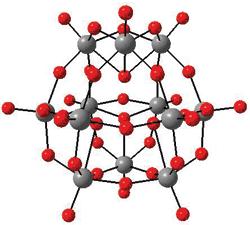Tungsten is a metal that is used in various and diverse products, from bullets and light bulbs to jewelry - a metal that scientists considered harmless to the environment.

A new and surprising scientific study, published in the scientific journal Chemical & Engineering News, raises concerns about the possible health and environmental dangers of tungsten - a metal used in various and varied products, from bullets and light bulbs to jewelry - a metal that scientists considered harmless to the environment.
In the article, the editor of the scientific journal, Rachel Petkewich, notes that scientists have long appreciated that tungsten is neither water-soluble nor toxic. As a result, in the mid-XNUMXs, the US military developed "green" ammunition containing tungsten as a more environmentally friendly alternative to lead-based ammunition.
But research now shows that tungsten, used in welding, metal cutting and other applications, is not as chemically inert as previously thought. Some forms of tungsten are able to easily penetrate into soil and underground aquifers under certain environmental conditions. Both the US Department of Defense and the US Environmental Protection Agency now classify the element as a "possible pollutant".
Although scientists believe that tungsten is less toxic than lead or mercury, they do not know what its exact health and environmental effects are - the article explains. Scientists have shown that exposure to tungsten can interfere with the growth of plants, cause fertility problems in worms and cause premature death in marine animals. However, the question of whether tungsten may cause long-term health effects in humans, and what is the mechanism of its activity, still await further research, the article notes.

11 תגובות
I wanted to mention that tungsten (along with cobalt) was used as a component in prosthetic structures (in the mouth) in the 80s until the early XNUMXs. So there is a fairly wide range of unexplored side effects.
Indeed Itzik. I meant tungsten from a military source in rapid injection under field conditions
Point, you must mean tungsten from Kilai source. Because tungsten from a vegetable source, for example, is not so harmful, nor does it appear in the quantities and at such speeds as the tungsten from the vegetable source.
There are those who received it as part of the preparation "Mag Gloplex"
Studies show that a relatively high percentage of those who have tungsten in their bodies have died.
Tungsten is found only in the projectile, and sometimes only in the core of the projectile. It is interesting that some of the strange health symptoms of soldiers and civilians in Iraq in the Balkans and probably also in our district are due to exposure to tungsten, tank shells and missiles contain quite a bit of this metal.
You are wrong and misleading.
A projectile is only part of the ball,
There is a projectile, there is a pod and together they are called a bullet, do you understand?
And the article did not say that only the bullet contains tungsten, maybe the backpack does too.
Interesting article, just wanted to mention that metals that lie in rows
above tungsten (ie: metals close to it chemically)
form toxic compounds (so this possibility is quite expected)
and that "weapon bullets" are called "projectiles".
Let them do a comprehensive study as soon as possible in the Ministry of Health to find out whether tungsten is found in all kinds of components of household utensils, etc. (which are exposed to water and liquids and therefore can have a quick effect) that people use in their daily lives.
I think this is very important!
The tungsten in the rifle bullets can kill an adult person weighing 80 kg instantly if it is injected (shot) directly into a vital organ (heart, brain).
Everyone move to Florentine
turn off the lights